Yesterday was the first day of a two-day industry-sponsored workshop on ENERGY STAR testing and verification for IT equipment. As an EPA-recognized testing laboratory and certification body, MET Laboratories was on hand to take notes. Following are highlights.
The workshop is being co-hosted by Dell & ITI at the Dell campus in Austin, Texas. In attendance are the EPA, 3rd party labs, and major ITE manufacturers: Lenovo, EMC², HP, Lexmark, Fujitsu, IBM, Dell, Oracle, Cisco Systems, Intel and AMD.
Program Updates
Partners will need to annually report unit shipment data.
CBs will still be permitted to manage certification marks related to their ENERGY STAR program – this will not be governed by EPA.
IT Products can be certified under the original certification scheme through December 31, 2010, with test reports due by February 1, 2011. Following December 31, 2010 any new submissions for certification would need to go through the new 3rd party certification body program.
EPA will continue qualification of products that are additions to a product family qualified prior to January 1, 2011, until the specification revision is effective.
If a manufacturer’s lab is separately accredited by EPA then no need for SMTL/WMTL.
ENERGY STAR Standard Operating Procedures (SOP)
EPA has a template for its Certified Product Data Submission.
There is no guaranteed reciprocity between CBs – a CB can reject another CB’s certification (or Lab’s report).
Rebranding will be managed via letter of equivalency.
Verifying Product Family Membership
Applicants must have a “representative” model tested with a justification for the choice: explanation on variations within the family, a list of models included in the family. CBs need to maintain a list of all products in a family. EPA will be the arbiter of any CB challenge as to whether or not a specific model may be deemed “representative.”
Rule is to certify the least energy efficient configuration (worst-case scenario).
ENERGY STAR will provide clarification on definition of product differences for PCs and Servers via supplementary guidance on SOP.
CBs do not need to receive a product sample? EPA thinks requirement that CB receive a sample should not be standard practice.
Minimum Test Report Requirements:
- Test procedure name listed
- Test data listed
- Serial number listed
- Sample description
- Equipment calibration dates and next due dates
- Test engineer and witness names and signatures
- Test results organized by applicable test procedure section and clearly marked to indicate results that are relevant to ENERGY STAR
SOP Appendix A – product-specific guidance contains power supply requirements for IT products.
EPA shall be the final arbiter for all product-specific aspects of certification review that are unclear.
CB can certify a different brand without data review if already certified by the CB; EPA encourages CBs to work together to avoid duplicative testing and review; CBs need to flag models that are certified under different brand names and maintain a data field specific to the model tested.
CBs will be submitting data to EPA using the MESA interface on a bimonthly-monthly basis
Verification Testing
CBs annually test 10% of certified products by subtype.
Private Labelers: Brands A, B, and C are all one product for verification testing purposes.
EPA will provide additional guidance on verification testing model selection.
All members of a family are subject to testing, but not more than one per round of surveillance testing. Ten percent of a product family needs to be tested.
Use of first party facilities are permissible only when off-the-line testing is the only practical option so long as CBs witness the test; CB must be able to justify why this is acceptable.
WMTLs/SMTLs can perform verification testing as long as the CB witnesses it.
Failure in Verification testing is when there is greater than 5% difference between certified and subsequent tested ratings.
Challenge Testing
CB must judge the legitimacy of a challenge claim. Challenge testing is limited to partner-to-partner challenges.
Failure in Challenge testing is whether or not it meets ENERGY STAR product requirements.
HP Presentation on Product Qualification Process and Checklist
HP urges product qualification to take into account supplier reality of manufacturers and development in Taiwan and China. Says that it will take six months to fully implement ENERGY STAR requirements throughout its entire supply chain.
CBs will have to determine when the product introduction date is, so as not to announce information about the product before it debuts.
HP has listed all the various action items involved in the product qualification process. This captures all the fundamentals the manufacturer will experience with ENERGY STAR qualification. HP has also created a process description for SMTLs.
